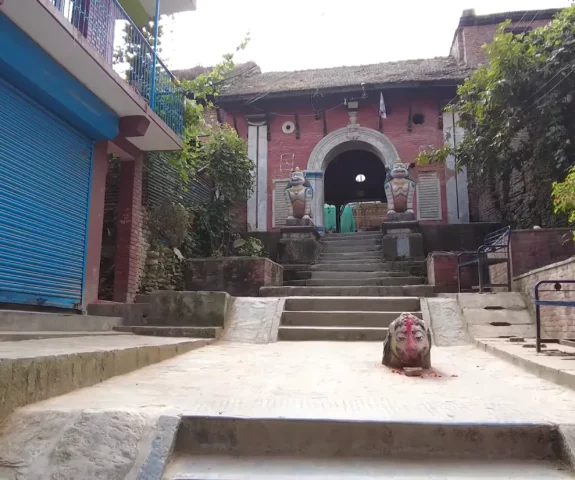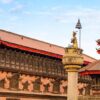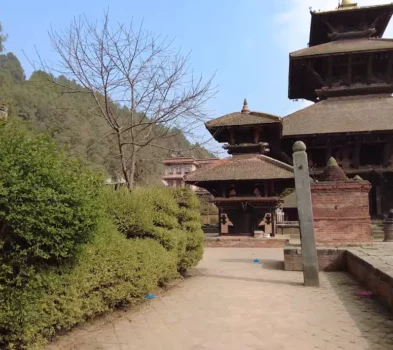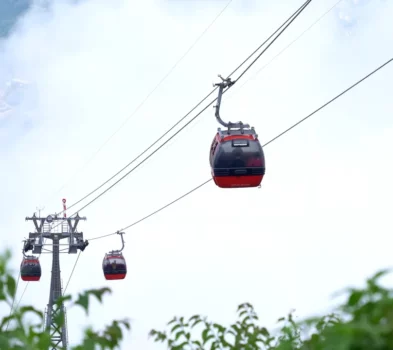Duration
6-7 hoursBungmati Khokana Day Tour
Trip Grade
EasyGroup Size
1-16 PeopleMax Altitude
1,445m. / 4,741ft.Best Season
Feb- May/ Sept- NovActivity
Day TourTransportation
Private VehicleTrip Customization
On request (click here)Highlights of Bungmati Khokana Day Tour
- Cultural hot spot of Newari tradition and culture.
- Famous temple Rato Machendranath.
- Also called the Living Museum.
- Greenfield and Vegetation.
Trip Introduction
Bungmati and Khokana villages are a cultural hot spot to observe Newari tradition and culture. These two towns, Bungmati & Khokana, lie in the southern part of the world heritage UNESCO site Patan. Being close to the city and located inside Kathmandu valley, Bungamati and Khokana still hold their ancient touch, narrow lanes, and typical Newari houses and their culture on ancient touch.
Morning excursion to this area provides a rare opportunity to see the morning rituals and the daily life of locals residing in the area. The popular attraction besides the cultural interest is the famous Rato Machendranath temple located in the middle of the town and carrying Kharpan, which is a traditional carrying good by Newari people.
While exploring this village, you will witness the daily activities of the people. Women sitting outside the house, busy spinning, men crushing the seed, and other daily activities are the most common sights. Khokana village is also famous for its unusual mustard-oil harvesting process in which a heavy wooden beam is used to crush the mustard seeds in order to extract the oil.
You can do the Bungmati Khokana Day tour all year. However, during the monsoon season also you will also enjoy the farmer farming the rice planting on the field. People of any age group can enjoy this tour as it is easy, and you can pick any other tour package in addition to this.
At Himalayan Adventure Treks, we take care of all the important things you need on this tour. We provide you with the finest travel services along with experts and helpful guides. Our company offers many other tours and travel packages for Nepal, Tibet & Bhutan as well.
Outline Itinerary of Bungmati Khokana Day Tour
Day 01: Bungamati and Khokana: A Cultural Heritage Tour.
Our guests sharing their experiences (Photo/Video Gallery)
Detail itinerary of Bungmati Khokana Day Tour
Day 01: Bungamati and Khokana: A Cultural Heritage Tour.
Morning Pickup & Start of the Journey:
Your day begins with a comfortable pickup from your hotel at around 8:00 AM. A professional tour guide and a separate driver will accompany you, ensuring a smooth and informative journey. As you leave the bustling streets of Kathmandu, you will gradually transition into the serene countryside. The drive to Bungamati and Khokana takes approximately 5 to 6 hours, including exploration time.
Exploring Bungamati – The Living Museum of Newar Culture:
Bungamati, a classic Newari village, is a hidden gem that offers a glimpse into Nepal’s traditional lifestyle. As you enter, you will notice rows of old-style brick houses with wooden carved windows. A defining characteristic of Bungamati is its narrow alleys lined with hanging dry chilies and maize corn—a beautiful sight that reflects the locals’ way of preserving food.
The majority of people in Bungamati belong to the Newar community, known for their rich traditions, skilled craftsmanship, and unique architectural styles. You will observe local artisans carving wooden sculptures and handicrafts, which they have been doing for centuries.
A highlight of Bungamati is the Rato Machindranath Temple, one of the most significant religious sites for both Buddhists and Hindus. The temple is dedicated to Rato Machindranath, the god of rain and harvest, and is the focal point of an important annual festival. Your guide will explain the historical and religious significance of the temple, as well as the grand chariot festival that takes place here.
As you stroll through the village, you will notice elderly citizens gathered at the Pauwa (a traditional communal resting area), chatting and enjoying Hukka (a traditional smoking pipe), reflecting the unhurried lifestyle of the locals.
Khokana – A Village of Heritage and Simplicity:
A short drive from Bungamati takes you to Khokana, another ancient Newari village that is well known for its traditional mustard oil production. This charming village has remained untouched by modern influences, allowing visitors to experience authentic Newari culture.
In Khokana, you will see farmers working in the fields, carrying Kharpan (traditional bamboo baskets balanced on their shoulders), filled with fresh vegetables. Agriculture remains the primary occupation in this region, and locals take pride in their farming traditions.
One of the key attractions here is the Rudrayani Temple, dedicated to Goddess Rudrayani, a form of Durga. This temple is not only an important religious site but also a hub for local gatherings and festivals.
Khokana is particularly famous for its hand-pressed mustard oil production, a practice that dates back centuries. You will get the chance to visit a traditional oil mill, where mustard seeds are ground using wooden presses, producing high-quality oil known for its strong aroma and health benefits.
The Impact of the 2015 Earthquake:
In April 2015, a massive earthquake struck Nepal, causing significant destruction in Bungamati and Khokana. Many of the ancient brick houses, temples, and monuments collapsed. However, the resilient community has been working tirelessly to restore their heritage, blending traditional designs with modern engineering to rebuild in an earthquake-resistant way. As you walk through the villages, you will see renovated buildings and ongoing restoration efforts, a testament to the locals’ determination to preserve their culture.
Return to Your Hotel:
After exploring these two historic villages, you will head back to Kathmandu, where you will be dropped off at your hotel. Along the way, you can reflect on the rich traditions, artistic craftsmanship, and agricultural lifestyle that make Bungamati and Khokana such unique destinations.
This tour provides an immersive experience into Nepal’s Newari culture, architecture, and rural traditions, making it a must-visit for history lovers, cultural enthusiasts, and photographers.
Activity: 6-7 hours
Max. Altitude: 1,445m/4,741ft. Bungmari Khokana
Note:
If you have your own private group and want to make your trip private, we can run the custom trip all the day as per your requirements and group size.
Includes and Excludes
What are included with package?
- Hotel Pickup and Drop-off: This service includes transportation to and from your hotel to the tour starting point, ensuring convenience and a smooth transfer. It eliminates the need for additional arrangements or expenses for getting to the location.
- Professional Guide and Driver: A licensed, knowledgeable guide will accompany you to provide insights into the local culture, history, and any points of interest. The driver ensures safe and comfortable transportation, handling the logistics of getting you to your destinations.
- Entrance Fees: These fees cover the cost of accessing various sites or attractions that are part of the tour, such as parks, museums, temples, or other points of interest. They ensure that you can visit these places without needing to pay separately at each location.
What are not included with package?
- Food and Drinks: This means that meals and beverages are not part of the package, and participants will need to cover their own food and drink costs during the tour. You will be responsible for purchasing meals at restaurants or from local vendors along the way, based on your preferences.
Pick Your Suitable Date
Book a Private Trip
Private & Group Discount Price
-
1 -
1 person
US$ 250
-
2 -
2 people
US$ 150
-
3 -
5 people
US$ 125
-
6 -
10 people
US$ 100
-
11 + people
9999
US$ 75
Total Cost:
US$ 250
Route Map & Altitude Chart
Kathmandu Hotel
Start/End point
Kathmandu Hotel
Trip Information
Entrance fees of Heritage Sites of Nepal:
Nepal is famous for world heritage sites, Tourist attractions places, and monuments areas. Tourism is the second income source of the country. Entrance fees, National park fees, climbing royalties are the backbone of the Nepalese economy.
Foreigner tourists visiting heritage sites, attraction places, and monuments of the country and have to pay a certain entrance fee to get inside the area. The people of South Asian countries (SAARC) have to pay fewer entrance fees in comparison to tourists from other countries. Many tourists want to see the typical Nepalese art and cultural places, happily paying the entrance fee because it is worth paying to visit.
The 7 heritage sites of Kathmandu valley are amazing. Boudhanath, Pashupatinath, Swayambhunath, Kathmandu Durbar Square, Patan Durbar Square, Bhaktapur Durbar Square, and Changunarayan have their own history. They are not only rich in art and architecture but also fountain spiritual places of Hinduism and Buddhism. Most of the constructions made have a tantric background and old history.
Not only the Kathmandu valley but other parts of the country are also rich in nature and history. Lumbini (Birth Place of Gautam Buddha) Chitwan National park, Pokhara, Nagarkot, Trekking trails, Peak climbing, Expedition are the main tourist destination in Nepal and main income sources of the country. It is the government that keeps the price of priceless monuments and makes some money from tourists who visit them.
Please find the attached PDF file for the Entrance fees of World heritage and other attraction places in Nepal.
Entrance Fees of UNESCO World Heritage Sites in Nepal
About Country
Popularly recognized worldwide for its majestic sky-dominating peaks, Nepal is one of the most sought-after nations for trekking and other adventure activities. This tiny Himalayan nation is home to eight of the world’s tallest peaks, including Mt. Everest (8848.86m)- the highest mountain in the world.
Moreover, the rugged and rural trekking trails to the massifs along the dense forest which is filled with exotic floras and faunas instills excitement and adventures to the travelers. However, traveling to Nepal is not only about the mountains and natural beauty. Unraveling the beauty that lies in the old monuments, palaces, and temples. Nepal has a diverse array of cultures, traditions, languages, and history which are reflected in the lifestyle of the people.
Key Facts
Location: Nepal is located in South Asia; between two great giants the Republic of China to the north and India to the south, east, and west.
Geography: A landlocked country, Nepal is divided into three geographical regions, namely, the Himalayas, the Hills, and the Terai.
Capital: The capital city of Nepal is Kathmandu.
Area: The total area of Nepal is 147,181sq km.
Population: The current population of Nepal is 29 million.
Political system: Nepal is a federal republic country with a multi-party system.
Major religion: Nepal is a secular state but the majority of people follow Hinduism, followed by Buddhism and Christianity.
Time zone: The time zone of Nepal is GMT +5:45.
Official Language: The official language of Nepal is Nepali.
Working hours: The working hours in Nepal are from 10 am to 5 pm.
Electricity: Currently, all the major cities have electricity while electricity supply in some rural areas is limited. The standard voltage of electricity in Nepal is 220V.
Visa Information
All tourists visiting Nepal except tourists from India should have a valid passport and visa. An On-Arrival visa to enter can be obtained at the Tribhuvan International Airport or any other land entry/exit points at the Nepal-Tibet and Nepal-India border. During the peak season, there will be a long line of tourists here trying to get their visas. So, to avoid the endless waiting you should visit the nearest Nepalese diplomatic missions stationed in your country before your arrival.
An On-Arrival Tourist Visa costs USD 30 for 15 days, USD 50 for 30 days, and USD 125 for 90 days. Find more information regarding the updated visa fees at http://www.nepalimmigration.gov.np/post/notice-regarding-visa-fee-updates.
You can also extend your visa within a valid period which will cost you USD 3 per day. However, if you are visiting Nepal from SAARC countries you don’t have to pay visa fees as gratis fee or free visa is applicable for 100 days. Regarding information about tourist visas, you can head to the information on the official website of the Department of Immigration at http://www.nepalimmigration.gov.np/page/tourist-visa.
How to reach the country
Nepal is very well accessible via air, rail, and road. Tribhuvan International Airport is the only international airport and the entry point for those arriving by air. Nepal Airlines is the main operator in the nation. Other international airlines here are Air Arabia, Air Asia, Etihad airlines, Fly Dubai, Jet Airways, Malaysia Airlines, Qatar Airways, Silk Air, and Thai air. The rail and road service can only be used by those arriving from India.
In terms of land transport, there are several land entry/exit points at the Nepal-Tibet and Nepal-India borders. Kerung and Kodari are the entry/exit points at the Nepal-Tibet border whereas
Janakpur-Jainagar railway is the sole railway that connects Nepal with India, several buses connect Delhi and Kathmandu.
Popular destinations to visit
There are many places you can visit in Nepal. Nepal is not only gifted with natural beauty but it is also culturally rich which means there are many heritages and sites you can visit. Kathmandu Valley is the first and foremost destination that you should not miss out on. The seven UNESCO world heritage sites in the valley, namely, Patan Durbar Square, Bhaktapur Durbar Square, Kathmandu Durbar Square, Pashupatinath, Swayambhunath, Boudhanath, and Changunarayan.
Other places you must visit while in Nepal are Pokhara, Chitwan, and Lumbini. Pokhara is a scenic lake city, located 6 hours’ drive away from Kathmandu city. There you will be able to enjoy the serene and peaceful nature with the Annapurna ranges in the backdrop.
Lumbini, the birthplace of Lord Buddha, is a historic destination whereas the Chitwan National Park is a natural haven for exotic flora and fauna. Both of these are also enlisted as world heritage sites by UNESCO. Palpa, Bandipur, Bardia National Park, and Ilam are some of the popular destinations.
As for trekking and mountaineering activities, Annapurna, Everest, Langtang, Manaslu, Upper Mustang, and Dolpo regions are some of the most popular ones in Nepal.
Internet and Communication in the country
You do not have to worry about not getting communication service or Internet service in Nepal. In recent years, the internet and communication services have drastically progressed and developed. While in the major cities and tourist destinations, you can use free Wi-Fi including many of the cafes and restaurants. Similarly, almost every hotel and some public areas provide Wi-Fi services. However, Wi-Fi is not always available in remote areas in the Himalayas and rural Hilly regions.
In such situations, a cellular connection is the best option for both Internet access and communication. NTC and Ncell at two of the biggest telecommunication corporations and offer sim cards with various packages at a reasonable price. These service providers have a wide reach over many parts of Nepal. You will easily be able to purchase any sim card with your passport or identity card.
Local currency and foreign exchange
While in Nepal, you should use Nepali rupees (NRs) which is also the official currency of Nepal. You can easily exchange your currency into the Nepalese Rupee at the Tribhuvan International Airport or the exchange counters and banks around the major cities. Also, the major cities like Kathmandu, Pokhara, Chitwan, and Lumbini have a great availability of banks and ATMs. However, their availability becomes quite scarce when you head to the Himalayas and remote areas.
So, it is best if the travelers perform all their money-related activities while they are in the major cities.
Weather and climate
The climate in Nepal varies according to altitude and the current season. The lowland of the Terai region in the southern part of the country is very hot and humid during the summer. The temperature there can get as high as 45 degrees Celsius.
The middle part is also known as the hilly region has a pleasant and bearable climate all year long. However, in winter the nights and early mornings can get quite chilly. The Himalayan region is the northernmost part of the country and is above 3300m. This region usually has alpine climatic conditions and during the winter season, it experiences adverse weather conditions.
Nepal generally has four seasons, namely, spring, summer, autumn, and winter. The spring here means every part of the country has flowers blooming and summer means a lot of humidity and rainfall. While the autumn is neither too hot nor too cold and the skies are always clear.
The winter season brings snow in the Himalayan region and some parts of the hilly region as well. Finally, during the monsoon season, the entire country experiences heavy rainfall except in the rain shadow areas of Upper Dolpo and Mustang.
People, culture, and festivals
Nepalese are known to be one of the kindest people all over the world. With a smile on everyone’s face, you will be warmly welcomed and greeted. The word “Namaste” is used while they join their hands together which means a respectful greeting. Nepal is a culturally rich country with many different castes, languages, and traditions.
The diverse culture and tradition result in many different festivals celebrated all around the nation. The major festivals celebrated are Dashain, Tihar, Holi, Sonam Losar, Gyalpo Losar, and many more. Especially in Newari settlements, people celebrate many colorful and radiant festivals. You will be able to experience wonderful and lifelong memory if you visit Nepal during the time of festivals.
Frequently Asked Questions
Where are Bungmati and Khokana villages located?
Bungmati and Khokana are traditional Newari villages situated in the southern part of Patan, within the Kathmandu Valley. Just a short drive from the city, these villages are known for their ancient architecture, cultural richness, and preserved Newar lifestyle.
What makes Bungmati and Khokana culturally significant?
These villages are cultural hotspots that provide insight into traditional Newari culture and rituals. With their narrow lanes, brick houses, community courtyards, and daily Newari lifestyle, they offer a glimpse into how people have lived for centuries in Kathmandu’s heritage zones.
What is the Rato Machhendranath Temple and why is it important?
The Rato Machhendranath Temple, located in the heart of Bungmati, is a sacred Newari religious site dedicated to the god of rain and harvest. The temple is central to one of Nepal’s biggest chariot festivals, showcasing Newar spiritual heritage and communal devotion.
What kind of activities can visitors observe during the Bungmati Khokana Day Tour?
During the tour, visitors can witness morning rituals, women spinning yarn, men crushing seeds, and locals carrying goods in traditional kharpan. It’s a chance to observe the authentic lifestyle and occupational heritage of the Newar community.
What is unique about the mustard oil processing in Khokana?
Khokana is famous for its traditional mustard oil production, where oil is extracted using a wooden beam oil press (ghani). This ancient method of oil extraction has been preserved for generations and is a living example of indigenous Newari craftsmanship.
When is the best time to do the Bungmati and Khokana tour?
The tour can be done year-round, but visiting during planting season (monsoon months) offers a special experience. You can see rice farming in action, making it ideal for those interested in Nepali agriculture and rural lifestyle.
Is the Bungmati and Khokana Day Tour suitable for all age groups?
Yes, it is a light walking tour, suitable for all age groups. The tour doesn’t involve strenuous hiking, making it perfect for families, seniors, or anyone interested in easy cultural day tours near Kathmandu.
What is the significance of the kharpan seen during the tour?
The kharpan is a traditional Newari carrying tool—a wooden yoke used to balance goods on the shoulders. It is a symbol of Newar heritage and daily life, still in use in Bungmati and Khokana today.
Can this tour be combined with other nearby destinations?
Yes, the Bungmati Khokana Day Tour can easily be combined with visits to Patan Durbar Square, Chobhar Gorge, or Pharping Monastery. These sites offer additional insight into Nepali culture and spirituality, making for a richer experience.
What makes Bungmati and Khokana ideal for cultural photography?
The traditional architecture, active daily life, seasonal farming, and religious ceremonies make these villages perfect for cultural photography in Nepal. The scenic beauty and intact Newari ambiance provide authentic and compelling visuals for photographers.

















